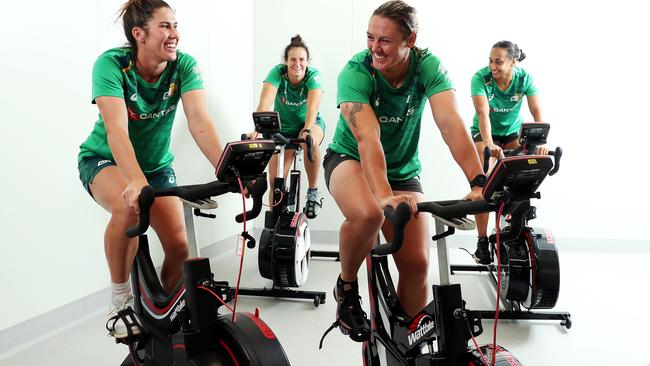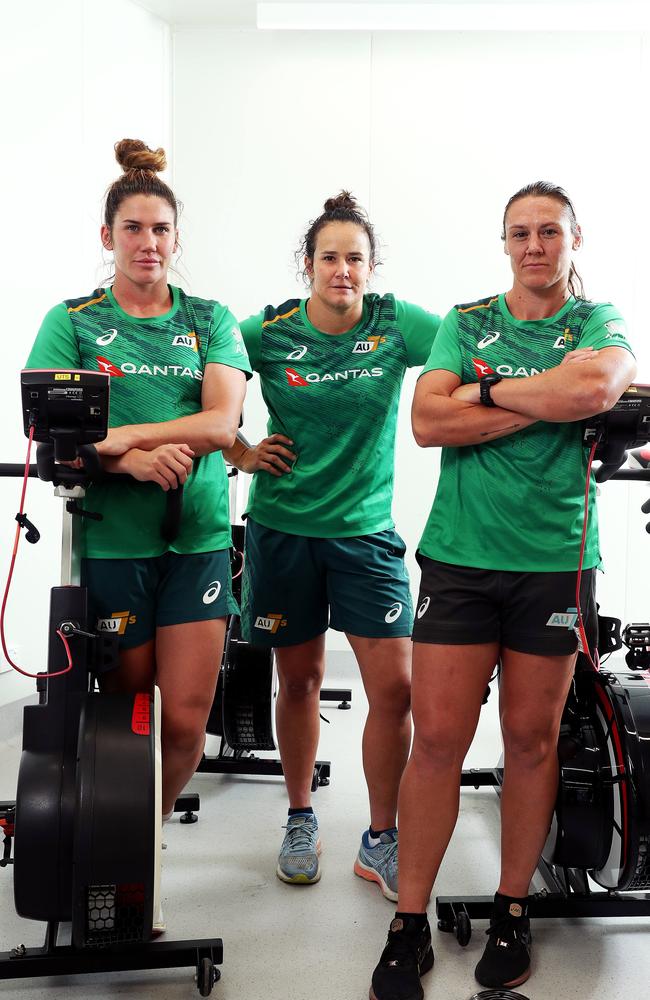Aussie athletes train in readiness for hottest Olympics in Tokyo on record
Tokyo is about to deliver hottest Olympic on record and Australia’s athletes are going to extreme lengths to beat the heat.
Olympics
Don't miss out on the headlines from Olympics. Followed categories will be added to My News.
Exclusive: This year’s Tokyo Olympics are anticipated to be the hottest on record and in response Australia’s athletes are expected to guzzle 500 litres of slurpie every day of competition to combat the heat.
In addition to slushies, ice vests and ice baths pre-competition to bring core temperature down, athletes are preparing with heat acclimatisation.
Some, like the Rugby Sevens women’s team, are using hi-tech heat chambers to train the body to sweat more efficiently and to retain electrolytes.
On an average day in July, the temperature in Tokyo can reach highs of 35°C and humidity ranges from about 78 per cent relative humidity to 83 per cent and this can lead to heavy fatigue.

Dr Jo Miller, senior physiologist and head of the Australian Institute of Sport’s Tokyo Heat Project for the Olympic team, said without adequate preparation performance could be decreased by 10-15 per cent.
“A lot of our athletes were planning to prepare overseas, for their summer months, and then head into Tokyo. But now because of COVID, most of our athletes will be coming out of our winter into those conditions – that is a massive change for the body to adjust to performance,” she said.
“But we are putting our athletes through heat acclimatisation and to do that successfully the key physiological responses we’re looking for is to increase sweat rate, decrease heartrate at given exercise intensity and better retention of electrolytes.
“We are anticipating extreme humidity in Tokyo and we know in addition to physiological impact, thermal discomfort can impact on cognitive decision-making, mood, reaction times … but for optimal performance, we want our athletes feeling as good as they can in those challenging conditions.”
The number of days required to achieve optimal adaptation varies between individuals, most adapt within seven to 10 days, 14 days is optimal but our Rugby Sevens team are already acclimatising.
Charlotte Caslick, key member of the 2016 Olympic gold medal winning team, said the team had been completing cardio, circuit and even skills sessions in the heat chamber that is part of UTS Sports Science facilities located on the floors above Rugby Australia’s headquarters at Moore Park in Sydney.
“We’ve been jumping on the stationary bikes, ski machines … we do a heat session every week at the moment,” Caslick, 26, said.
“It’s a bit like Bikram yoga and it’s disgusting – the temperature says 38 degrees but with all our bodies in there I’m sure it’s hotter and the humidity is like 90.
“Before the Games were postponed we were replicating game time, we would do six 15-minute sessions … and we are working our way back to that. We also have some training camps planned in Darwin.”

Women’s Sevens coach John Manenti also spends time in the chamber in preparation to Tokyo.
Dr Miller explained: “It’s really easy to forget is that we also have coaches and other support staff out on the field and being impacted by the heat. They’re watching that next competition, doing data analysis, making decisions so we have to prepare them, and their cognitive abilities, as well.
“The Australian Olympic Committee has been very supportive around this.
“I also think we can underestimate the aquatic sports. It’s easy to assume because they’re in the water, they’re cool. We underestimate how hard they work and how much they sweat because there are no visual cues.
The last time Tokyo hosted the Summer Olympics in 1964, officials moved the Games to October due to concerns about the heat.
There will be no change to the timing of the Games from July 23-August 8 however, the marathon and race walking events have moved north to the city of Sapporo where temperatures are expected to be five or six degrees cooler.
Other IOC measures for the Games will include mist sprays, shading tents and reflective coating on roads and buildings.
selina.steele@news.com.au




